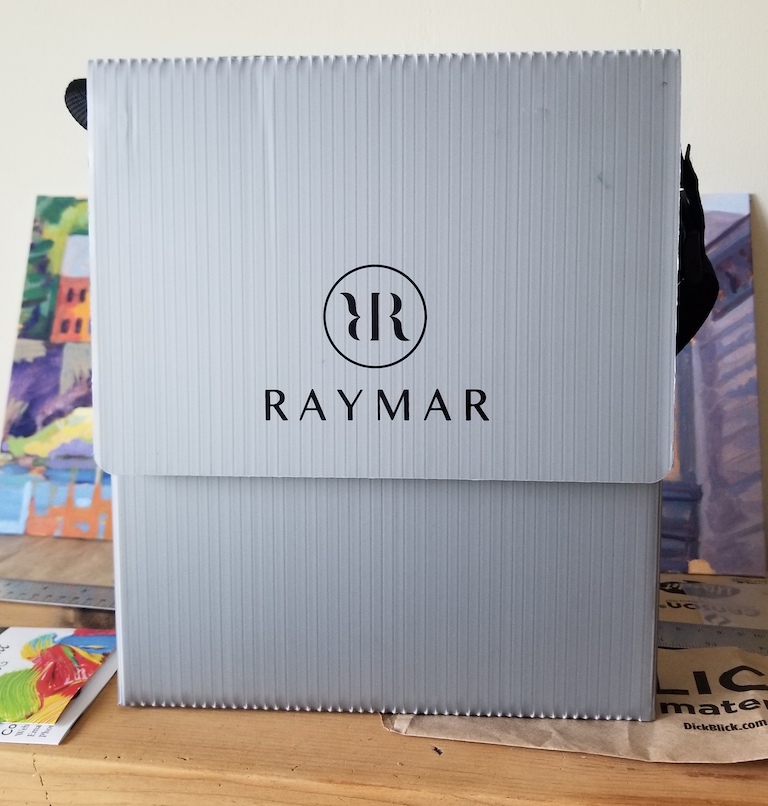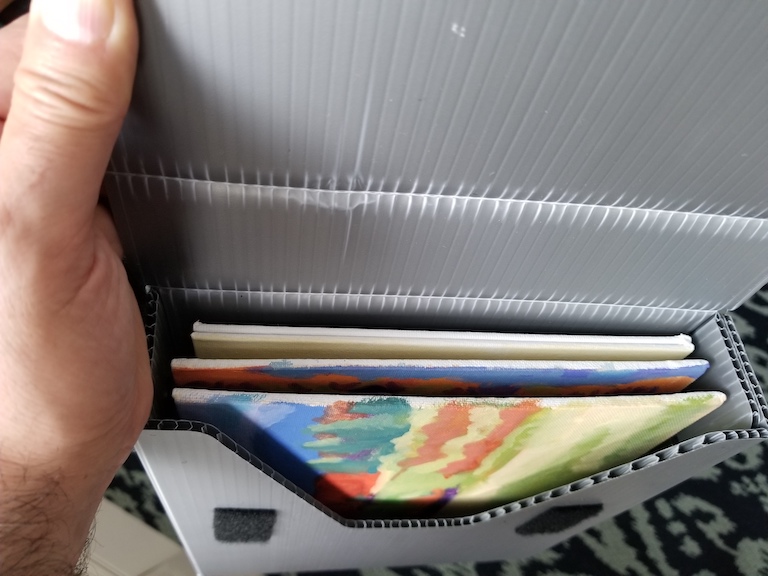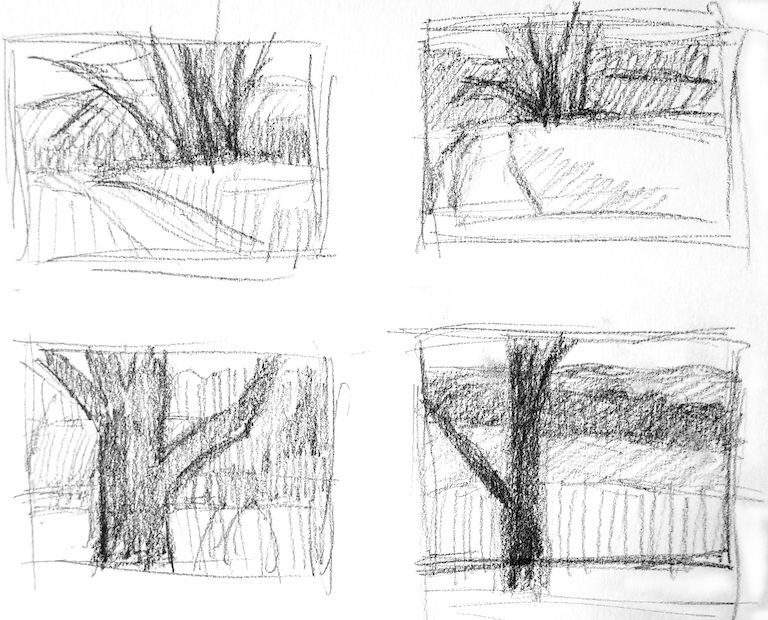
My plein air experiences began with lugging around a heavy, large French easel that tenuously held only one painting on the easel stand. After doing this a couple of times, I decided that I needed a dedicated wet painting carrier that held multiple panels and was lightweight.
I’d like to mention that I’m not getting paid for this recommendation although I wouldn’t be against that. I just think this is a very good, useful product and it could be a good addition to your plein air equipment.
Why use a wet painting panel carrier at all?
- To carry and store your wet paintings when plein air painting
- It’s a necessary piece of equipment especially when you’re producing multiple paintings
- Convenience! It removes the hassle of carrying a wet painting in your hands
Advantages of using the Raymar carrier?
Every company that produces a pochade box most likely makes a wet painting carrier. Sometimes, the panel carrier is incorporated into the pochade box and sometimes it’s an entirely separate item. The problem with both of these options is that they’re heavy. In comes the Raymar wet painting panel carrier. It has 3 slots that can hold six 1/8” painting panels back-to-back (although I only use it for three panels). It’s made of fluted plastic making it lightweight and waterproof.
NOTE: this product holds painting panels not canvases.
As a backpacker, I’m very conscious of how much things weigh and what a drag it is to carry unnecessary weight. This product’s light weight was a big selling point for me. The price depends on the size. I went with the 8” x 10” although they have different size carriers and multi-width carriers. My 8” x 10” set me back $35 (including tax and shipping). This seems a bit pricey for plastic but it’s worth the cost (and convenience) as it’s a very sturdy item.

Above is the Raymar wet painting carrier in action. See the two canvas panels in one slot? It has a velcro closing lid and adjustable strap for easy transport
Summary
- A dedicated wet painting carrier will simplify your plein air painting process
- The Raymar wet painting carrier comes in different sizes (and multi sizes) to hold different size panting panels
- The carrier holds up to six panels back-to-back
- It’s lightweight and waterproof
- More info on the Raymar website at https://www.raymarart.com/collections/wet-painting-carriers
What do you use to carry your wet paintings when painting plein air?


